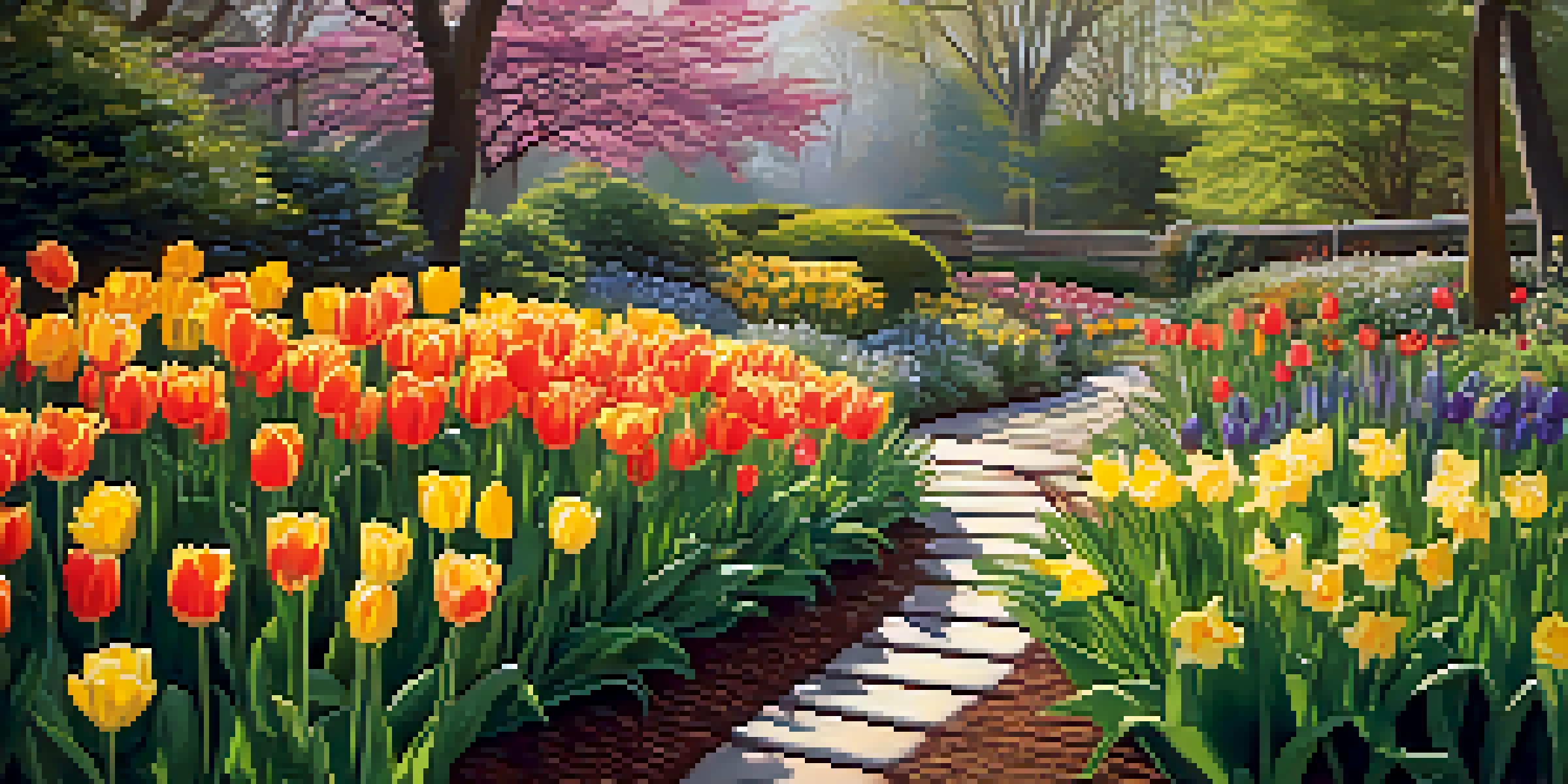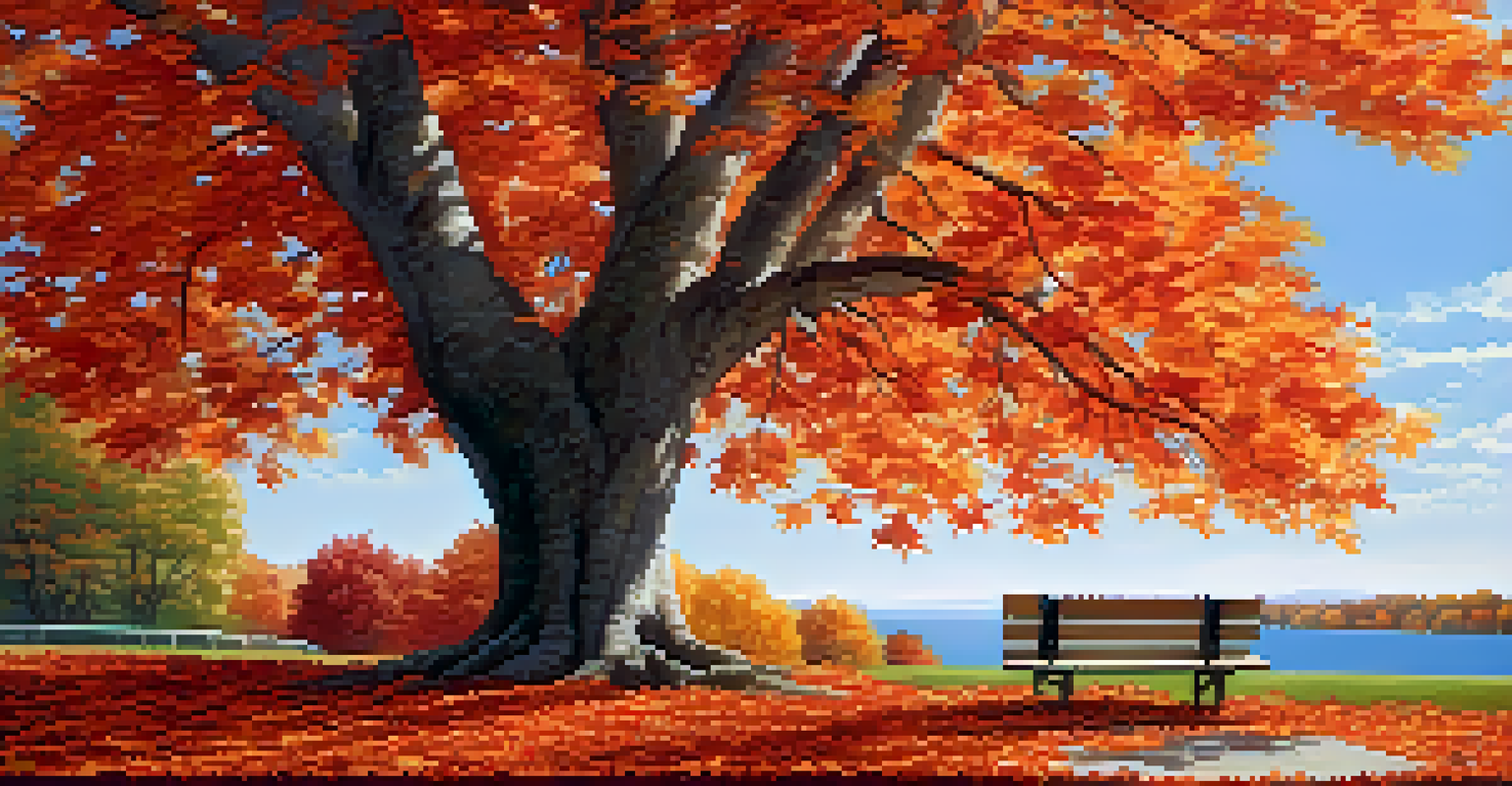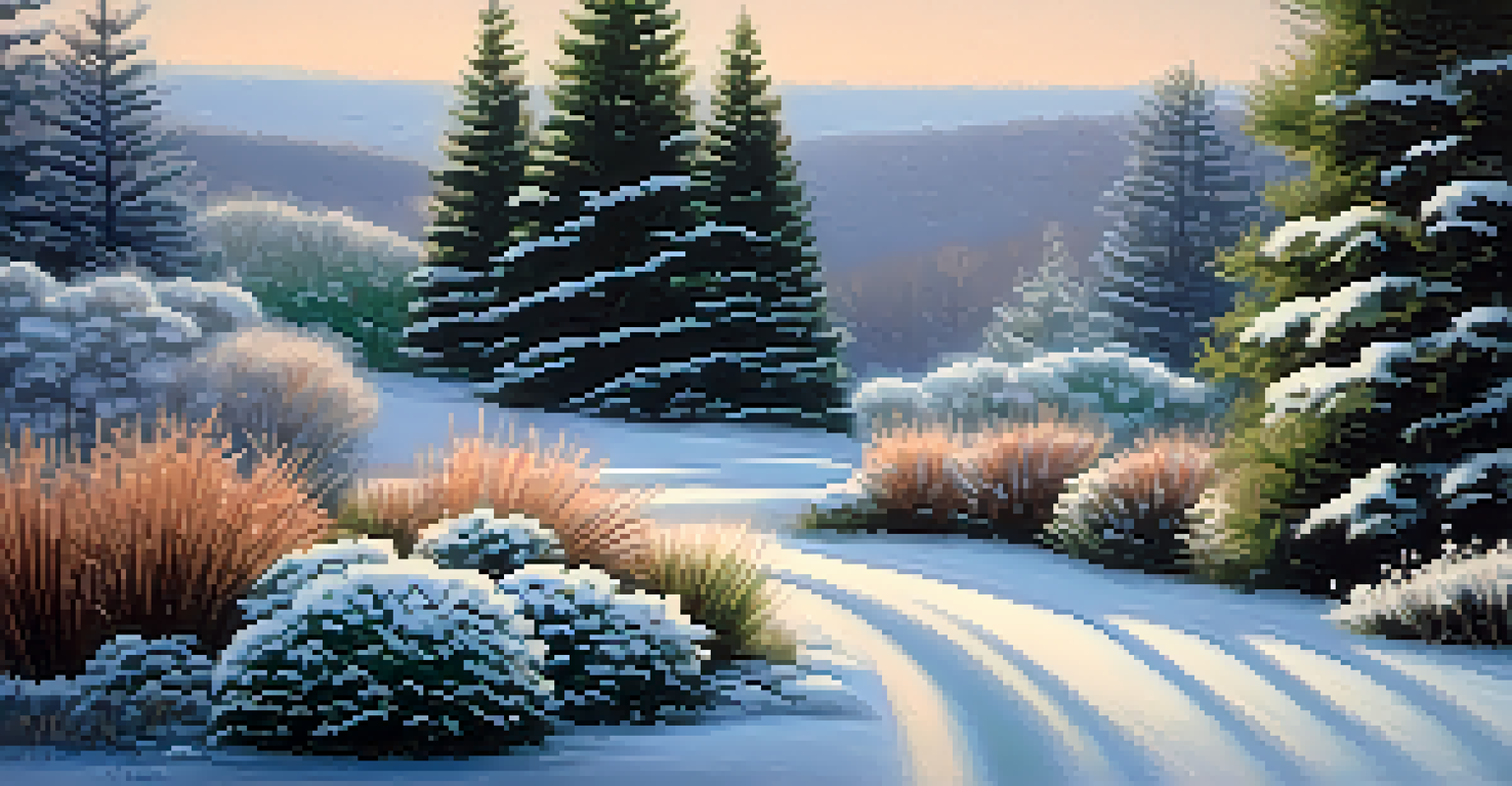How to Design a Landscape with Seasonal Color Changes

Understanding Seasonal Color Changes in Landscaping
Seasonal color changes in landscaping are nature's way of showcasing the beauty of different times of the year. From the blooming flowers of spring to the rich hues of autumn leaves, these transitions can create a dynamic and engaging outdoor space. Understanding the seasonal cycles of plants helps you to plan a garden that offers visual interest throughout the year.
The earth laughs in flowers.
Different plants bloom or display vibrant colors during specific seasons, creating a palette that evolves over time. For instance, tulips and daffodils herald the arrival of spring, while chrysanthemums and asters add warmth in fall. By selecting a variety of species, you can ensure that your landscape reflects the changing seasons beautifully.
Consider how the interplay of colors can evoke different moods. Bright yellows and pinks in spring can uplift spirits, while earthy tones of red and orange in autumn can bring a sense of warmth and coziness. This awareness allows you to design a landscape that resonates with the emotions and experiences of each season.
Choosing Plants for Year-Round Color
Selecting the right plants is crucial for achieving a landscape rich in seasonal color. Perennials, annuals, and shrubs each have their own flowering times and color palettes. By combining various species, you can create a layered effect that provides continuity and interest all year long.

For instance, consider planting early-blooming perennials like crocuses or hyacinths alongside late-summer flowering varieties like sedum. This strategy not only ensures blooms from spring through fall but also creates a backdrop of texture throughout the seasons. Incorporating evergreens can also provide structure and color during winter when many other plants are dormant.
Year-Round Color Through Plant Selection
Choosing a mix of perennials, annuals, and shrubs ensures a vibrant landscape that changes beautifully with the seasons.
Don’t forget about foliage! Many plants feature stunning leaves that change colors with the seasons. For example, maples display brilliant reds and oranges in autumn, while evergreens maintain their lush green throughout the year, adding depth to your landscape even in the cold months.
Incorporating Seasonal Annuals for Instant Color
Annuals are a fantastic way to add instant color and vibrancy to your landscape. Unlike perennials, which return year after year, annuals need to be replanted each season, but they offer an incredible array of colors and shapes. Planting annuals like petunias in spring or pansies in fall can create bursts of color that complement your perennial plantings.
The true meaning of life is to plant trees, under whose shade you do not expect to sit.
By strategically placing annuals in high-visibility areas, you can enhance the overall aesthetic of your garden. For example, a border of bright marigolds can frame a walkway beautifully, while zinnias can add flair to a flower bed. This seasonal rotation keeps your landscape looking fresh and inviting.
Moreover, using annuals also provides an opportunity to experiment with colors and arrangements each year. This flexibility allows you to adapt your landscape to current trends or personal preferences, making your garden a reflection of your evolving tastes.
Designing with Color Theory in Mind
Color theory plays a pivotal role in landscape design, influencing how we perceive and feel about our outdoor spaces. Understanding the color wheel can help you create harmonious combinations that work well together. For example, complementary colors like purple and yellow can create a vibrant and eye-catching display.
Additionally, the use of analogous colors—those that are next to each other on the color wheel—can create a soothing and cohesive look. Think of planting shades of red, orange, and yellow together to evoke the warmth of a sunset. By thoughtfully selecting your plants based on color relationships, you can enhance the visual appeal of your landscape.
Engaging with Nature's Seasonal Shifts
Designing a landscape that reflects seasonal changes fosters a deeper connection to nature and creates lasting memories.
Don't hesitate to play with contrasts as well. Dark foliage against bright flowers can create striking focal points, while light-colored blooms can brighten up shady areas. By using color theory as a guide, you can create a landscape that not only looks good but also feels inviting and comfortable.
Creating Texture and Layering for Depth
Texture adds depth to a landscape, making it visually interesting and inviting. By combining plants with different leaf shapes, sizes, and colors, you can create layers that draw the eye. For instance, pairing soft, feathery grasses with bold, broad-leaved plants can create a stunning contrast.
Layering is also important when it comes to vertical space. Taller plants like sunflowers or hollyhocks can be placed at the back of a bed, with shorter plants in front to create a cascading effect. This not only maximizes the use of space but also allows each plant to shine in its own right.
Incorporating hardscape elements like rocks, pathways, and fences can further enhance texture and layering. For example, a stone wall can provide a rugged backdrop to delicate flowers, creating a striking visual contrast. By thoughtfully integrating these elements, you can craft a landscape that feels rich and full of life.
Planning for Seasonal Maintenance and Transition
A beautifully designed landscape requires ongoing maintenance to thrive through the seasons. Planning for seasonal changes means considering how your plants will need care throughout the year. Regular tasks like pruning, deadheading, and mulching can keep your garden healthy and vibrant.
Transitioning from one season to another also involves swapping out annuals and preparing perennials for dormancy. For example, in late fall, you might plant bulbs for spring blooms while ensuring that your existing plants are ready for winter. This forward-thinking approach keeps your landscape not just beautiful but also resilient.
Importance of Texture and Layering
Incorporating various plant textures and layering techniques adds depth and visual interest to your outdoor space.
Finally, don't forget to enjoy the process! Gardening is a journey, and each season brings its own rewards and challenges. By staying engaged and attentive to your landscape, you can create a space that evolves beautifully over time.
Engaging with Nature: The Joy of Seasonal Changes
One of the most rewarding aspects of designing a landscape with seasonal color changes is the opportunity to engage with nature. Each season offers unique experiences, from the first blooms of spring to the golden hues of autumn. Observing these changes can deepen your connection to the environment and foster a greater appreciation for the natural world.
Additionally, a landscape that reflects seasonal changes can create lasting memories for you and your loved ones. Think of the joy of picking fresh flowers in spring or raking leaves in the fall. These activities can transform your garden into a place of gathering and celebration, enriching your life.

By creating a beautiful outdoor space that embraces the cycles of nature, you not only enhance your property but also cultivate a sense of peace and tranquility. This harmonious relationship with your landscape can provide a sanctuary where you can relax, unwind, and rejuvenate.